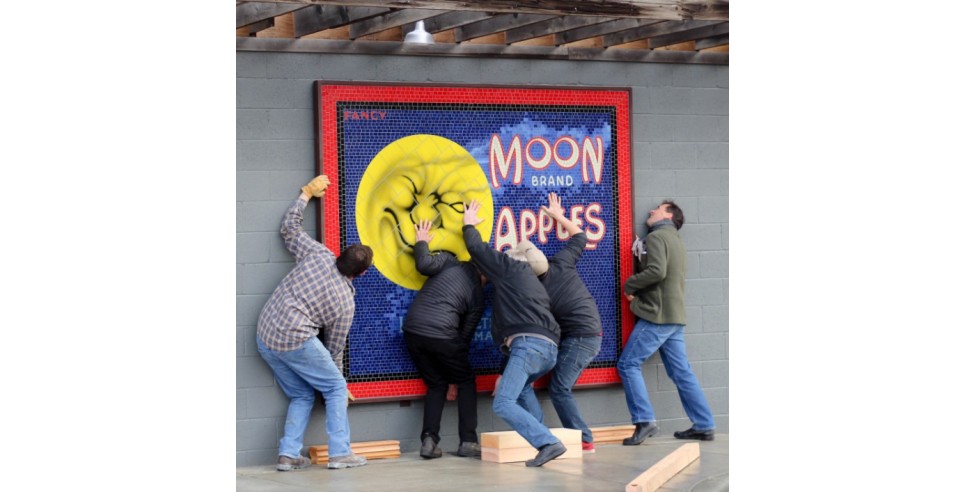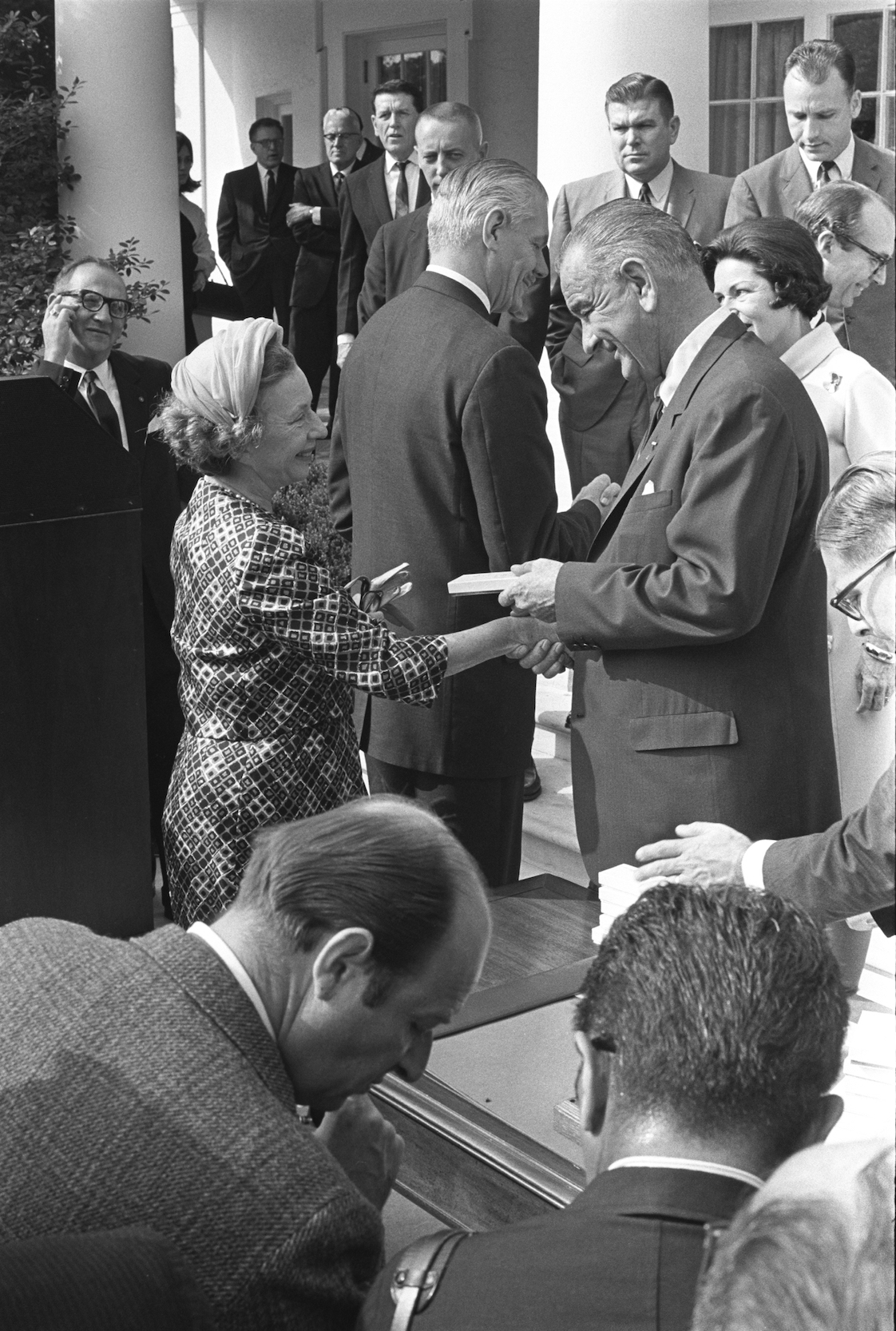
At the start of this year, when then President-elect Joe Biden began announcing his Cabinet picks, he threw in a bonus nugget, boosting the director of the Office of Science and Technology Policy to a Cabinet-level position. That’s welcome news after four years of the Trump administration’s chronically dismissive attitude toward science-based information, whether hurricane-track forecasts or coronavirus cures.
But Biden’s announcement elicited a what-about-us reaction from another sector that has been marginalized for an even longer period of time. Across the country, representatives from the fields of music, theater, and other arts disciplines began to clamor for the creation of another new Cabinet post, this one dedicated to culture.
For most of the history of American government, arts and culture have been treated like second cousins, the afterthoughts. One of Biden’s predecessors in the Oval Office, Lyndon B. Johnson, acknowledged as much back in 1965.
“Somehow, the scientists always seem to get the penthouse,” he said, “while the arts and the humanities get the basement.”
It remains to be seen whether the Biden administration will consider bringing the cultural folks “upstairs.” But it’s worth knowing that the production of arts and cultural goods and services contributes over $870 billion annually to the nation’s GDP, according to the Bureau of Economic Analysis. The cultural sector represents a larger slice of our economic pie than agriculture, or construction, or transportation/warehousing. Also, cultural workers have the unique ability to be relevant and contribute to a broad spectrum of endeavors – in infrastructure projects, educational systems, health initiatives, social justice efforts, and much more.
If you look at the United States’ history of investment in the cultural sector of this country, the support has been spotty. Perhaps it began in 1800, when the nation’s capital was removed from Philadelphia. At the time, Philly was considered the cultural and financial center of the fledgling United States. Washington, D.C., on the other hand, was a brand-new city of grand design, but it was situated within a wilderness of thick forests and mosquito-infested marshes.
President John Adams signed legislation that provided $5000 for the purchase of books that would serve as a civilizing base of reference for Congress in this land that his wife Abigail described as “trees & stumps in plenty.” Thus the Library of Congress was born. But for decades after that, the library struggled with a small staff, a shortage of space, and the lack of a consistent annual appropriation.
A few blocks away, on the other side of the Capitol, the Smithsonian Institution experienced similarly unpromising beginnings. James Smithson died in 1829 and left his estate for the purposes of creating a center for the “increase and diffusion of knowledge.” But it took nearly two decades before the organization finally was founded.
Eventually, both of these institutions became Washington D.C. landmarks, within sight of the legislators who came to work in the Capitol Building every day, and impossible to ignore. But if it took Congressional members a long time to recognize the value of investing in culture in the nation’s capital, it took twice as long to get the federal government to understand that there was value in promoting and supporting culture out in the “hinterlands” of Alabama, say, or Idaho.
A National Conservatory of Music was established in New York in 1891, and the following year Czech composer Antonin Dvorak arrived to serve as the Conservatory’s artistic director. During his tenure in America, he composed his famous New World Symphony. But Congress neglected to provide financial support for the Conservatory, so it folded within a matter of years.
It wasn’t until Franklin D. Roosevelt was elected President during the Great Depression that culture got a real shot in the arm. Roosevelt announced his Works Progress Administration in 1935. A massive federal back-to-work scheme, it included programs to hire tens of thousands of artists of all stripes – composers, musicians, painters, sculptors, theater folk and more. Artists were tasked with designing posters for public health messaging, or high profile public art for post offices and schools around the nation. They trained unskilled laborers to create handcrafted toys for preschools and woven rugs and textiles for park lodges. Performing artists brought plays and concerts and puppet shows to areas of the country that never had seen such things before, while writers and photographers documented the stories of common Americans who had lived through enslavement in the antebellum South or the ravages of the Dust Bowl.
All of these efforts helped to share and expand Americans’ views – of their country, their fellow citizens, and their capacity for survival and growth. But the program ended in 1943 as the United States became embroiled in World War II.
Succeeding presidents supported the arts personally – President Harry Truman was his daughter Margaret’s biggest fan as she pursued a singing career. And during his two terms as President, Dwight D. Eisenhower liked to paint for 10 minutes before lunch every day.
Also, it was during Eisenhower’s time in office that Congress authorized funding for the construction of a national arts center in Washington D.C.
But when John F. Kennedy became President, his public demonstrations of appreciation for the arts – beginning with his invitation to Robert Frost to recite a poem at his inauguration, and cemented with his hosting of a rare performance by cellist Pablo Casals at the White House – signaled the possibility that the arts would once again be elevated in the national discourse.
Before that could come to meaningful fruition in terms of new laws or funding sources, however, Kennedy’s life and work were cut short by an assassin’s bullet. The aforementioned national arts center was named the John F. Kennedy Center for the Performing Arts to honor his memory.
 But it was Kennedy’s Vice President and successor to the Presidency, Lyndon B. Johnson, who took the next really bold steps in advancing the nation’s commitment to culture. Shortly after being sworn in as President, he brought a full-time arts advisor onto his staff, the first in American history. He also inserted an arts plank into the Democratic Platform for the 1964 presidential campaign.
But it was Kennedy’s Vice President and successor to the Presidency, Lyndon B. Johnson, who took the next really bold steps in advancing the nation’s commitment to culture. Shortly after being sworn in as President, he brought a full-time arts advisor onto his staff, the first in American history. He also inserted an arts plank into the Democratic Platform for the 1964 presidential campaign.
And when Johnson won his race against Barry Goldwater, he marshaled dozens of cultural stars (among them Gregory Peck, Agnes DeMille, Ralph Ellison, Minoru Yamasaki and Leonard Bernstein) to testify before Congress in support of the creation of a National Foundation on the Arts and the Humanities. LBJ, meanwhile, conducted some forceful lobbying over the phone from the Oval Office.
By late September 1965, Congress passed the legislation he had asked for, and Johnson signed the bill into law in a Rose Garden ceremony. And so the National Endowment for the Arts and the National Endowment for the Humanities were born.
In remarks he made that day, the President talked about art as the vehicle for expressing a nation’s inner vision, adding – “And where there is no vision, the people perish.”
Johnson promised that this new legislation would create a national level theater, opera company and ballet company, as well as an American film institute. He said there would be funding to commission new musical and theatrical works and create more artist residencies in schools and universities.
But perhaps most importantly, he stressed, “It is in the neighborhoods of each community that a nation’s art is born. In countless American towns there live thousands of obscure and unknown talents.
“What this bill really does is to bring active support to this great national asset.”
Today, the NEA and NEH strive to honor that aim by bringing funding and programs to all fifty states, as well as Puerto Rico and the U.S. territories.
State-level administrators are quick to point out the vital role these agencies play.
Kim Konikow, executive director of the North Dakota Council on the Arts, puts it bluntly: “We could not do it without them!”
With a North Dakota State Legislative Assembly that is nearly 85 percent Republican, there is not a lot of support for the arts. But even fiscal conservatives recognize the value in getting the matching federal dollars the NEA offers, so they pony up a minimal amount in every biennium, and the NEA “essentially doubles our budget,” Konikow says.
The Council on the Arts has leveraged this to provide programming to every corner of the state. NEA funding has supported arts projects put forward by the Bhutanese Buddha Society of North Dakota, the Dakota Woodturners Club, the Western Plains Opera Company and others. Likewise the NEA has sustained North Dakota’s popular Folk and Traditional Arts Apprenticeship Program, which matches master practitioners of Finnish weaving, for example, or Mandan/Hidatsa flutemaking, with novices wishing to learn those skills. The Poetry Out Loud and Arts in Education programs serve North Dakota youth.
And with NEA support, the Council piloted an Art for Life Program to improve the emotional and physical health of seniors in North Dakota’s care facilities. That program has since been adopted by elder care facilities throughout the Upper Midwest.
“The NEA generally leaves it up to the state to design their own programs,” Konikow says, “but they’re really interested in building community, building rural partnerships, making sure there’s arts activity happening in smaller communities.”
One thousand miles to the west, Glenda Carino concurs. She is the communications manager for the Washington State Arts Commission (ArtsWA).
The state, home to Microsoft and Amazon, has a number of large metropolitan areas that are blessed with abundant cultural resources and generous donors.
“But as grantmakers, we’re all cognizant of the fact that a lot of the small organizations don’t have the same wherewithal,” Carino says.
To address the issue, ArtsWA dedicated some money from an NEA partnership grant to put out a call to rural organizations seeking funding for arts projects. For this pilot project, an artisan group in the struggling agricultural burg of Tieton (population 1191, median household income $30,052) was selected to receive the services of a grantmaker who helped them submit a competitive grant for national-level funding. That effort resulted in a prestigious NEA placemaker grant which allowed the town to create a series of mosaic directional signs around town. Building on that success, the group was able to solicit more NEA support as well as private funding for a larger-scale mural series of brightly-colored fruit label mosaics.
These days little Tieton has become a destination, and the mosaic studio, still based there, is working on major projects commissioned by big cities – proof that those initial modest investments in an arts enterprise can wind up having exponential economic benefit.
In Washington State, Carino notes, the creative sector contributes $44.3 billion annually to the state’s economy.
“In the arts, we’re always fighting against the fact that people think arts are just a feel-good thing. When you take a look at it, it’s a sector that works really hard.”
When President Donald Trump entered the White House, he attempted to eliminate NEA funding. It wasn’t the first time the Arts Endowment had been targeted – many times before, Congress had sought to slash the NEA budget, considering the arts a frill, rather than an economic engine with fringe benefits.
But Trump didn’t get far, because he had made the mistake of appointing Mary Anne Carter to head the agency.
When her appointment was first announced, some in the cultural world complained that Carter’s background as a policy adviser to Florida Governor Rick Scott did little to qualify her for the post. When the naysayers learned that Carter said her commitment to the arts had been sparked by seeing how dance lessons had been beneficial for her daughter, they dismissed her as a “dance mom.”
But Carter got to work. She expanded the NEA’s work with the military through the Creative Forces program and explored other ways to connect the arts with healing/well-being initiatives. She promoted vigorous outreach to underserved communities, including Historically Black Colleges and Universities and Native American tribes.
And she worked to “build the bench” – educating leaders in business and state and local government about the value of the arts, and establishing regular communications with the members of Congress.
Carter’s work paid off. The NEA actually saw modest budget increases during her tenure. And when an amendment was put forward by a conservative member in the House of Representatives to slash NEA funding, the proposal received the scantest support in a decade.
Then when the global pandemic hit, the NEA was entrusted with $75 million in CARES Act funding to give a measure of financial security to America’s arts and culture sectors – it was distributed within weeks. In North Dakota, Konikow was able to use those emergency funds to prop up every single 501c3 organization in the state that provided arts activities.
“Mary Anne Carter was incredible – and well-liked across the aisle,” Konikow says.
But in keeping with tradition as a political appointee, Carter resigned earlier this year so the new administration could fill the top position with an appointee of its own choosing.
With a solid foundation to build on, how will a new director Build Back Better during Biden’s term?
An infusion of more funding, Konikow suggests, because the pandemic has hit the cultural sector hard. Also: continued recognition of the importance of the arts to rural America.
From Washington State, Carino ticks off some further adds to the wish list: ongoing efforts to demonstrate that the arts are not a partisan issue, additional focus on BIPOC outreach and a WPA-type program for the arts.
And what about a Cabinet position for culture?
Carino offers her own spin on the idea: “An arts czar would be a great idea!”
Barbara Lloyd McMichael is a freelance writer living in the Pacific Northwest.









